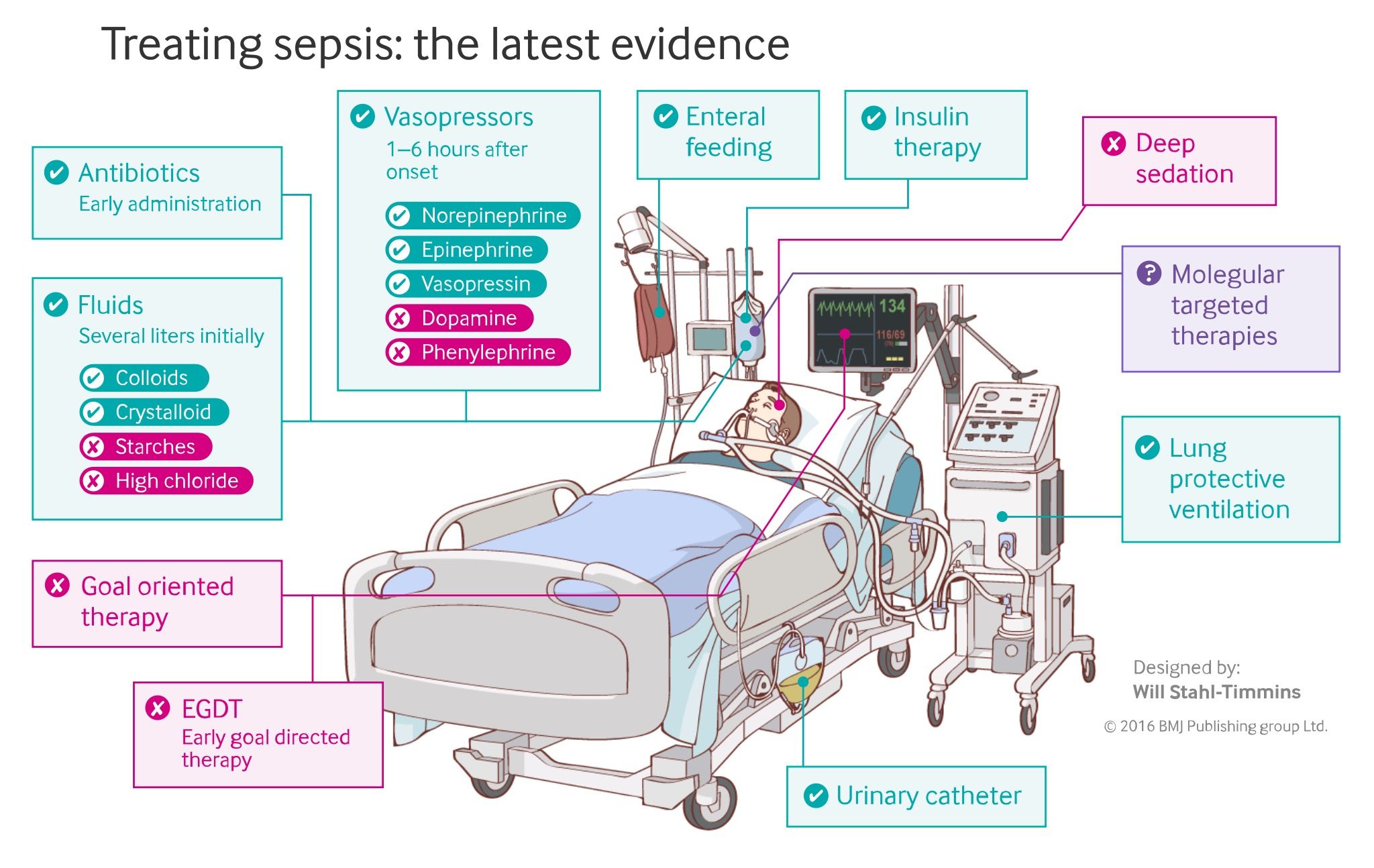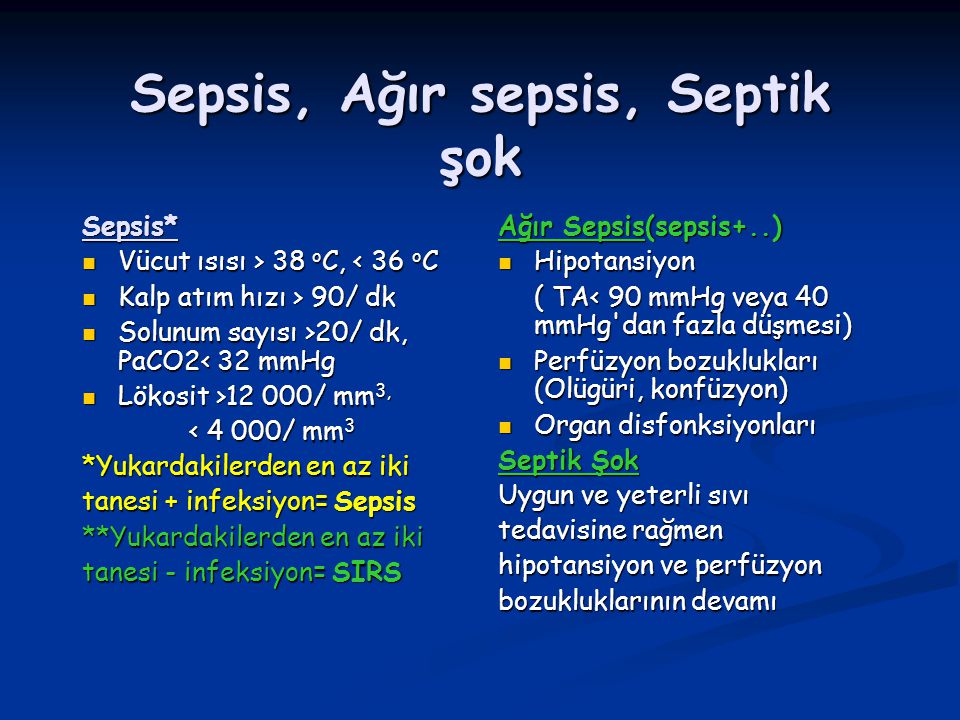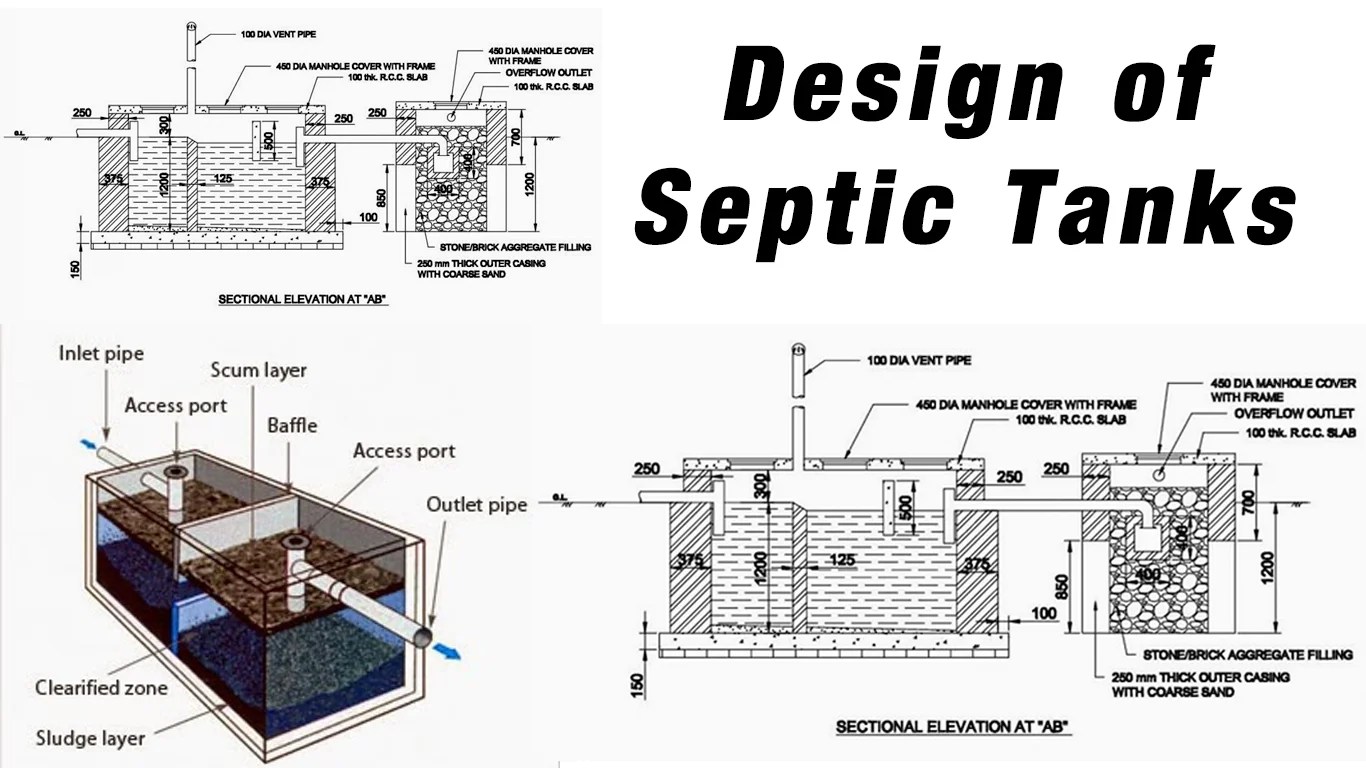Am i septic. Sepsis: Understanding the Risks, Symptoms, and Urgent Treatment for This Life-Threatening Condition
What is sepsis? Sepsis is an extreme immune response to an infection that can become life-threatening. Learn about the risk factors, warning signs, and urgent medical care needed to prevent complications.
Understanding Sepsis: The Immune System’s Extreme Response to Infection
Sepsis is a serious and potentially life-threatening condition that occurs when the body’s immune system responds excessively to an infection. This extreme immune response can damage tissues and organs, leading to a dangerous drop in blood pressure, organ failure, and even death. Sepsis can develop in response to infections in various parts of the body, including the skin, lungs, urinary tract, or other areas.
Causes and Risk Factors of Sepsis
Sepsis can be caused by bacterial, fungal, or viral infections, including COVID-19. The infection may enter the body through a wound, during or after surgery, or other means. Certain groups are at higher risk of developing sepsis, including:

- Older adults (over 65 years of age)
- Infants and young children (under 1 year of age)
- People with weakened immune systems (e.g., those with chronic illnesses, HIV, or cancer)
- Individuals with certain chronic conditions, such as diabetes
The increased risk of sepsis may be due in part to the growing problem of antibiotic resistance, which allows microbes to become immune to drugs that once controlled many infections.
Recognizing the Warning Signs of Sepsis
Sepsis can progress quickly, so it’s crucial to recognize the early warning signs and seek immediate medical attention. The most common symptoms of sepsis include:
- Fever, chills, and shivering
- Rapid pulse (tachycardia)
- Difficulty breathing
- Clammy or sweaty skin
- Extreme pain or discomfort
- Redness and swelling around a wound
As sepsis worsens, it can also cause low blood pressure, dizziness, reduced urine output, pale or discolored skin, changes in mental status, and a feeling of impending doom. Recognizing these signs and seeking prompt medical care are essential to preventing life-threatening complications.

Urgent Medical Treatment for Sepsis
When someone develops sepsis, they require immediate medical attention. Healthcare providers will work to identify and treat the underlying infection, administer antibiotics (if the infection is bacterial), provide oxygen and intravenous fluids to support organ function, and may use assisted breathing or surgery to remove damaged tissue, if necessary. Severe cases of sepsis or septic shock may require intensive care treatment, and some patients may need end-of-life care if the condition does not respond to standard therapies.
Preventing and Managing Sepsis in Vulnerable Populations
Certain groups, such as older adults, young children, and those with compromised immune systems, are at a higher risk of developing sepsis and experiencing rapid worsening of symptoms. For these individuals, it’s essential to:
- Closely monitor for any signs of infection and seek medical care promptly
- Ensure proper management of chronic conditions, such as diabetes, that can increase sepsis risk
- Provide preventive measures, such as vaccinations and proper wound care, to reduce the risk of infection
- Utilize specialized treatments, such as pressure ulcer prevention and deep vein thrombosis management, in hospital settings
Neonatal Sepsis: A Serious Concern for Newborns
Sepsis can also develop in newborns, a condition known as neonatal sepsis. Neonatal sepsis can occur within the first 24 hours of life (early-onset) or after 24 hours (late-onset) and is typically caused by bacterial, viral, or fungal infections. Factors that increase the risk of neonatal sepsis include maternal group B streptococcal infection during pregnancy, preterm delivery, and prolonged rupture of membranes before delivery. Prompt diagnosis and treatment are crucial to preventing complications and ensuring the best possible outcome for these vulnerable patients.

The Importance of Recognizing and Responding to Sepsis
Sepsis is a serious and potentially life-threatening condition that requires urgent medical attention. By understanding the risk factors, recognizing the warning signs, and seeking prompt treatment, individuals and healthcare providers can work to prevent the devastating consequences of this extreme immune response to infection. Early intervention and effective management are key to saving lives and minimizing the long-term impact of this dangerous condition.
Risk factors, symptoms, and treatment
Sepsis happens when the immune system responds dramatically to an infection. Symptoms include a high fever, a rapid heart rate, breathing difficulty, and confusion. Urgent medical attention is necessary to prevent life threatening complications.
It is likelier to develop in older people, younger children, and people with weakened immune systems or certain health issues.
Every year, sepsis affects around 1.7 million people in the United States and causes nearly 270,000 deaths. Around 1 in 3 deaths in hospitals result from sepsis.
Learning to spot the signs can help people receive the right care quickly. Sepsis is a medical emergency, and prompt treatment can save lives. In the past, people used the term septicemia, but this led to confusion. Experts now use the term sepsis instead.
A novel coronavirus infection can lead to sepsis. Find the latest information about COVID-19 here.
Share on PinterestSepsis is an extreme response to an infection and may become life threatening.
Sepsis is an extreme immune response to an infection. In a person with sepsis, the immune system can injure tissues and organs, and it can be life threatening.
Sepsis may be a response to an infection that develops in the skin, lungs, urinary tract, or another part of the body.
A common cause is septicemia, a bacterial infection in the blood. Sometimes people confuse the terms “sepsis” and “septicemia,” but they are different issues.
Anyone with an infection who develops the following sepsis symptoms needs urgent medical attention:
- a fever, chills, and shivering
- a rapid pulse, also known as tachycardia
- difficulty breathing
- clammy or sweaty skin
- extreme pain or discomfort
- redness and swelling around a wound
When sepsis is severe, it can also cause:
- low blood pressure
- dizziness or faintness
- low urine volume
- pale, discolored, or mottled skin
- skin that feels unusually warm or cold, as with a fever
- cool, pale skin at the extremities
- confusion, reduced alertness, and other changes in the person’s mental state
- a feeling of doom or sudden fear of death
- slurred speech
- diarrhea, nausea, or vomiting
- severe pain and extreme general discomfort
- shortness of breath
- loss of consciousness
As sepsis progresses, septic shock can occur. This involves blood pressure falling dangerously low, meaning that oxygen can no longer reach the body’s organs.
This involves blood pressure falling dangerously low, meaning that oxygen can no longer reach the body’s organs.
Learn more about septic shock here.
Older adults and younger children have a particularly high risk of sepsis, and they are also more likely to experience a rapid worsening of sepsis symptoms. But the issue can be harder to spot in these age groups.
Symptoms can also be harder to identify in people with:
- learning difficulties
- communication problems
- dementia
When a person requests medical help, the healthcare provider needs to know about:
- any symptoms
- any recent infections, traumas, or surgical procedures
- whether the person has a compromised immune system
- whether the person has diabetes or any other chronic condition
This may help speed up the diagnosis and allow for more rapid treatment.
Causes of sepsis include:
- bacterial infections
- fungal infections
- viral infections, including COVID-19
The pathogen may enter the body through a wound or during or after surgery.
Sepsis can affect anyone with an infection, but the risk is higher for:
- adults older than 65
- babies under 1 year of age
- people with weakened immune systems
- people with chronic illnesses, such as diabetes, HIV, and cancer
Vulnerability to sepsis appears to be growing. One reason for this may be antibiotic resistance — a term that refers to microbes becoming immune to drugs that once controlled many infections.
A doctor will provide rapid treatment for sepsis, including:
- treating the cause of the infection
- administering antibiotics, if the infection is bacterial
- providing oxygen and intravenous fluids to ensure blood flow to the organs
- providing a means of assisted breathing, if appropriate
- scheduling surgery, if necessary, to remove damaged tissue
Sepsis often requires treatment in a hospital, and some people need intensive care.
Older people, in particular, may also need treatment to:
- prevent pressure ulcers
- prevent deep vein thrombosis
- control glucose levels
Some severe cases of sepsis or septic shock do not respond to all disease-directed therapies. In these instances, healthcare professionals may need to provide end-of-life care.
In these instances, healthcare professionals may need to provide end-of-life care.
Sepsis can develop within 24 hours of birth, and in newborns, the issue is called neonatal sepsis. A baby is considered a neonate up to 90 days after delivery.
There is a higher risk of neonatal sepsis if:
- The person had a group B streptococcal infection during pregnancy.
- Delivery is preterm.
- The water breaks more than 24 hours before delivery.
Late-onset neonatal sepsis starts 24 hours or more after delivery. It can stem from a bacterial, viral, or fungal infection.
There is a higher risk of late-onset sepsis if the infant spends time in the hospital to receive treatment for another problem or comes into contact with someone who has an infection.
Signs and symptoms of neonatal sepsis include:
- changes in body temperature
- breathing problems
- diarrhea and vomiting
- a swollen abdomen
- low blood sugar
- jaundice
- a slow heart rate
- reduced movement, including sucking
- seizures
Older people have a higher risk of sepsis because they:
- often have other conditions, such as diabetes
- often have reduced immunity
- have more frequent infections, especially those that can lead to sepsis
- have a higher risk of malnutrition
Sepsis often stems from a urinary tract infection or an infection of the respiratory tract, such as pneumonia or the flu. In 2020, COVID-19 emerged as a risk factor for sepsis, especially in older adults.
In 2020, COVID-19 emerged as a risk factor for sepsis, especially in older adults.
The early signs of sepsis may be harder to spot in older adults than in younger people, and the issue can progress more rapidly.
According to Sepsis Alliance, people aged over 65 years are 13 times more likely to spend time in the hospital with sepsis than those aged under 65. In addition, 63% of people aged 60 and over have sepsis on entering intensive care.
After an older person recovers from sepsis, they may have an increased risk of:
- a repeat infection
- chronic pain and fatigue
- post-traumatic stress disorder, or PTSD
- organ damage
Overall, it is crucial for older people and their loved ones to recognize the signs of sepsis, ensure prompt treatment for any type of infection, and take steps to prevent sepsis from developing.
A doctor diagnoses sepsis by:
- taking a medical history, including details of any recent infections or other events
- taking account of the person’s symptoms
- performing a physical examination
- evaluating blood pressure, temperature, and other signs
- doing laboratory tests to identify the infection
While it is essential to treat sepsis as soon as possible, early diagnosis can be challenging. Many of the symptoms, such as a high fever, occur with other conditions.
Many of the symptoms, such as a high fever, occur with other conditions.
Taking steps to prevent infections and receiving prompt treatment for any that arise can reduce the risk of sepsis.
Other strategies include:
- getting routine vaccinations, including those for the flu and pneumonia
- taking steps to prevent sores and wounds, and keeping any that occur clean
- following hand washing guidelines
- seeking immediate medical attention if there are signs of an infection worsening
Also, during the COVID-19 pandemic, wear a face covering in public and practice physical distancing.
Early treatment for sepsis is often effective, but it can progress and become harder to treat quickly.
Most people recover from sepsis with treatment. However, it can have a long-term effect on a person’s health, especially if it has damaged organs or the immune system.
Treat any infection right away, seek professional care if an infection worsens, and if signs of sepsis occur, go to an emergency room at once.
About Sepsis | Sepsis Symptoms
About Sepsis | Sepsis Symptoms | The UK Sepsis Trust
What is sepsis?
Sepsis (also known as blood poisoning) is the immune system’s overreaction to an infection or injury. Normally our immune system fights infection – but sometimes, for reasons we don’t yet understand, it attacks our body’s own organs and tissues. If not treated immediately, sepsis can result in organ failure and death. Yet with early diagnosis, it can be treated with antibiotics.
5 people die with sepsis every hour in the UK. By helping us to reach more people with the signs of sepsis, we can work towards ending preventable deaths from this condition. After all, there is power in numbers. Click here to share the signs of sepsis on Twitter or download our Social Media graphic to share.
Symptoms
Sepsis can initially look like flu, gastroenteritis or a chest infection. There is no one sign, and sepsis symptoms present differently between adults and children.
How to spot sepsis in adults
Seek medical help urgently if you (or another adult) develop any of these signs:
- Slurred speech or confusion
- Extreme shivering or muscle pain
- Passing no urine (in a day)
- Severe breathlessness
- It feels like you’re going to die
- Skin mottled or discoloured
How to spot sepsis in children
A child may have sepsis if he or she:
- Is breathing very fast
- Has a ‘fit’ or convulsion
- Looks mottled, bluish, or pale
- Has a rash that does not fade when you press it
- Is very lethargic or difficult to wake
- Feels abnormally cold to touch
If you spot any of these signs, call 999 or go straight to A&E and Just ask: “could it be sepsis?”
A child under 5 may have sepsis if he or she:
- Is not feeding
- Is vomiting repeatedly
- Has not passed urine for 12 hours
If you spot any of these signs, call 111 or see your GP and Just ask: “could it be sepsis?”
2,000
children each year develop sepsis in the UK
40%
of all sepsis survivors suffer permanent, life-changing after effects
5
people die with sepsis every hour in the UK
Faqs
View all
Everything you need to know
Are you worried that your computer might have a virus? If your computer is infected, then it is important to know how to get rid of a computer virus.
In this article, you will learn everything you need to know about how computer viruses work and how to remove computer viruses.
Brief outline of the article:
- How to get rid of a computer virus.
- What is a computer virus.
- How to identify a computer virus on your computer.
- Can your computer be infected by a virus through e-mail.
- How to protect your computer from viruses.
How to get rid of a computer virus
In this section, we will discuss how to remove a computer virus from a Windows computer and from a Mac computer.
Removing a computer virus from a Windows computer
Computer viruses are almost never visible. Without anti-virus protection, you may not be aware of the existence of a virus on your computer. That’s why it’s important to install antivirus protection on all your devices.
That’s why it’s important to install antivirus protection on all your devices.
If your Windows computer has a virus, you need to follow these ten simple steps to get rid of it:
Step 1: Download and install a virus scanner
Download a virus scanner or Internet Security class solution. We recommend using Kaspersky Internet Security. The installation process is shown in the following video:
Step 2: Disconnect from the Internet
When removing a virus from the computer, it is advisable to disconnect from the Internet to prevent further spread of the threat: some computer viruses spread via the Internet.
Step 3: Restart your computer in Safe Mode
To protect your computer while removing the virus, restart your computer in Safe Mode. If you do not know how to do this, then the instructions are given below.
- Turn the computer off and on again
- When the image appears on the screen, press F8 to bring up the Advanced Boot Options menu
- Select “Safe Mode with Networking”
- Stay offline
Step 4: Remove all temporary files
Next, you need to remove all temporary files using Disk Cleanup.
Follow these steps:
- Click on the Windows logo in the lower right corner
- Enter “Temporary Files”
- Select “Free up disk space by deleting unnecessary files”
- In Disk Cleanup’s “Files to delete” list, find and select “Temporary Internet Files” and click “OK”
- Confirm “Delete Files” selection
Some viruses take effect when the computer is restarted. Deleting temporary files can remove the virus. However, relying on this alone is not reliable. To ensure that your computer is free of viruses, we recommend that you follow these steps.
Step 5: Run a virus scan
Now it’s time to open your antivirus or Internet Security solution and run a virus scan. If you are using Kaspersky Internet Security, select and click on the ‘Run Scan’ button.
If you are using Kaspersky Internet Security, select and click on the ‘Run Scan’ button.
Step 6: Remove or quarantine the virus
If a virus is found, several files may be affected. Select “Delete” or “Quarantine” to get rid of the virus. Run a computer scan again to make sure that no other threats remain. If other threats are found, quarantine or delete them.
Step 7: Restart your computer
Now that you have removed the virus, you can restart your computer. Just turn it on as usual. “Safe Mode” is no longer needed.
Step 8: Change all passwords
To protect your computer from further attacks, change all passwords in case they are compromised. This is only necessary if you have reason to believe that your passwords have been stolen by malware, but it’s good to be safe anyway.
You can always check the functionality of the virus on the website of the manufacturer of your antivirus or by contacting their technical support team.
Step 9: Update your software, browser and operating system
Updating your software, browser, and operating system will reduce the risk of cybercriminals exploiting gaps in old code to install malware on your computer.
Removing a computer virus from a Mac computer
If you have a Mac computer, you may think that your computer cannot be infected with a virus. Unfortunately, this is a misconception. For Mac, compared to Windows, fewer viruses are created, but they do exist.
Some Mac viruses masquerade as antivirus products. If you accidentally download one of these viruses, then your computer may be infected. Here are three examples of this type of virus: ‘MacDefender’, ‘MacProtector’ and ‘MacSecurity’.
If you think your Mac has a virus, follow these six steps to remove it:
- Quit the application or software that you think is infected.
- Open System Monitor and search for known Mac viruses such as MacDefender, MacProtector, and MacSecurity.

- If any of these viruses are detected, click “Stop Process”, then close System Monitor.
- Then open the Applications folder and drag the file to the Trash.
- Don’t forget to empty the Recycle Bin afterwards to permanently remove the virus.
- Make sure your software and applications are up to date so you can install the latest security patches.
To make sure you haven’t missed anything and make sure your Mac is protected, consider installing and running an antivirus solution if you don’t already have one. We recommend using a comprehensive Internet Security solution such as Kaspersky Total Security .
What is a computer virus?
A computer virus is a type of malicious software whose distinguishing feature is its self-replication – it copies itself onto any medium that is connected to a computer.
Computer viruses are so called because, by analogy with real viruses, they are able to reproduce themselves. Once a virus infects your computer, it spreads itself in this way. When infected with a virus, the computer may start to work more slowly, and there may be interruptions in its operation.
Once a virus infects your computer, it spreads itself in this way. When infected with a virus, the computer may start to work more slowly, and there may be interruptions in its operation.
There are three main ways your computer can become infected with a computer virus.
First, a computer can become infected through removable media such as USB sticks. If you insert USB flash drives or a disk obtained from unknown sources into your computer, it may contain a virus.
Sometimes hackers leave infected flash drives or disks on people’s desktops or in public places, such as cafes, with the expectation of spreading a computer virus in this way. People who share USB drives can also transfer files from an infected computer to a non-infected computer using this method.
Another way to infect a computer with a virus is to download a virus from the Internet.
If you download software or applications to your computer, be sure to get them from trusted sources such as Google Play or Apple’s App Store. Don’t download anything from pop-ups or websites you don’t know anything about.
Don’t download anything from pop-ups or websites you don’t know anything about.
A third possible way to infect your computer with a virus is when you open an attachment or click on a link in a spam message you receive in the mail.
If you receive mail from a sender you do not know or trust, do not open the mail. When opening such a message, do not open any attachments in it or click on any links.
Signs that your computer has a virus
There are several signs that your computer has a virus.
First, you should be alerted if your computer starts to slow down. If tasks take longer than usual to complete, then your computer may be infected.
Second, be careful if suspicious applications or programs appear on your computer that you do not know anything about. If you notice that an application or program appears on your computer that you did not download, be careful.
It’s a good idea to uninstall any programs on your computer that you don’t know about, and then run a scan with an antivirus or Internet Security class to check your computer for threats. If pop-ups appear when you close your browser, this is a sure sign that your computer is infected with a virus. If you notice this, take immediate action to remove the virus. To do this, follow the instructions given above.
If pop-ups appear when you close your browser, this is a sure sign that your computer is infected with a virus. If you notice this, take immediate action to remove the virus. To do this, follow the instructions given above.
Another sign of a possible computer infection by a virus is strangeness in the operation of applications or programs. If the programs began to crash for some unknown reason, then a virus may have started on your computer.
Finally, the infected computer may start to overheat. If you notice this, check your computer for viruses by running an antivirus or an Internet Security solution.
How can a computer become infected with a virus through e-mail?
Your computer can be infected by a virus via e-mail, but only if you open an attachment in a spam message or click on a link in a spam message.
Your computer cannot get infected just because you receive spam in the mail. If you receive such messages, mark them as spam or junk and be sure to delete them. Most email service providers (like Gmail) have automated this process, but if you do see some unwanted messages, manually mark them as spam and don’t open them.
Most email service providers (like Gmail) have automated this process, but if you do see some unwanted messages, manually mark them as spam and don’t open them.
How to protect your computer from viruses
Here are the main ways you can protect your computer from viruses:
- Use an antivirus or an Internet Security solution such as Kaspersky Total Security. To protect your Android mobile device, consider Kaspersky Internet Security for Android.
- Review user reviews of applications and software products.
- Before downloading applications and software, read the description from the developers.
- Only download apps and software from trusted sites.
- Check how many times applications and software products have been downloaded. The more downloads, the better.
- Check the permissions that applications and programs request. How justified are they?
- Never click on unverified links in spam emails, mail, or unfamiliar websites.

- Do not open attachments in spam messages.
- Keep your software, applications, and operating system up to date.
- When using public Wi-Fi networks, use a secure VPN connection, such as Kaspersky Secure Connection.
- Never connect unknown USB sticks to your computer, do not insert unknown disks.
Do not expose yourself to the risk of infection. Protect your computer with Kaspersky Total Security.
Related articles:
- What is a computer virus and a computer worm?
- A Brief History of Computer Viruses and the Future
- Development of methods for infecting computer viruses and malware
Coronavirus disease (COVID-19): how is it transmitted?
Coronavirus disease (COVID-19): how is it transmitted?
- Health »
- A
- B
- C
- D
- D
- E
- Y
- W
- W
- I
- R
- L
- M
- H
- O
- P
- R
- S
- T
- Y
- F
- X
- C
- H
- W
- W
- B
- S
- B
- E
- Yu
- I
- Popular Topics
- Air pollution
- Coronavirus disease (COVID-19)
- Hepatitis
- Data and statistics »
- News bulletin
- The facts are clear
- Publications
- Find country »
- A
- B
- C
- D
- D
- E
- Y
- W
- W
- I
- Y
- R
- L
- M
- H
- O
- P
- R
- S
- T
- Y
- F
- X
- C
- H
- W
- W
- b
- S
- b
- E
- U
- I
- WHO in countries »
- Reporting
- Regions »
- Africa
- America
- Southeast Asia
- Europe
- Eastern Mediterranean
- Western Pacific
- Media Center
- Press releases
- Statements
- Media messages
- Comments
- Reporting
- Online Q&A
- Events
- Photo reports
- Case Studies
- Questions and answers
- Speeches
- Update
- Emergencies ”
- News ”
- Disease Outbreak News
- WHO data »
- Dashboards »
- COVID-19 Monitoring Dashboard
- Basic moments ”
- About WHO »
- CEO
- About WHO
- WHO activities
- Where does WHO work?
- Governing Bodies »
- World Health Assembly
- Executive committee
- Main page/
- Media Center /
- Questions and answers /
- Questions and answers /
- Coronavirus disease (COVID-19): how is it transmitted?
December 23, 2021 | Questions and Answers
Updated April 30, 2021
How the COVID-19 virus spreadsamong people?
It is known that the causative agent of this disease is the SARS-CoV-2 virus, which spreads between people in various ways.
The virus can spread from the mouth or nose of an infected person, where the virus is shed in tiny fluid particles when coughing, sneezing, talking, singing or breathing. These particles range in size from larger respiratory droplets to finer aerosol dust.
- Available scientific data show that the virus spreads mainly between people in close contact with each other, usually within 1 meter (small radius). Infection can occur by inhalation of viral aerosol particles or droplets, or by direct contact with the eyes, nose, or mouth.
- The spread of the virus also occurs in poorly ventilated and/or overcrowded areas where people usually stay for long periods of time. Under these conditions, the cause of infection is the presence of viral aerosol particles in the air or their movement over a distance of more than 1 meter (large radius).
- In addition, the virus can be transmitted by touching contaminated surfaces and then touching the eyes, nose, or mouth without first cleaning the hands.

- Further research is underway to better understand how the virus spreads and to determine which conditions are most dangerous and why. In addition, new variants of the virus and the reasons why some of them are more transmissible are currently being investigated (link to the relevant WHO website).
When do infected people transmit the virus?
Regardless of the presence of symptoms, infected people can be contagious and the virus can be spread from them to other people.
Laboratory evidence suggests that infected people are probably most contagious just before the onset of symptoms (namely two days before the onset of symptoms) and at the onset of the illness. People with severe disease may remain contagious for a longer time.
Although people who never develop symptoms can transmit the virus, it is still unclear how often this happens and more research is needed in this area.
Is there a difference between those who have no symptoms at all and those who will soon, because in both cases there are no symptoms?
In both cases, we are talking about people who do not have symptoms. The difference lies in the fact that some infected people do not develop symptoms during the entire period of the disease, while others do not yet have symptoms, but they will appear later.
The difference lies in the fact that some infected people do not develop symptoms during the entire period of the disease, while others do not yet have symptoms, but they will appear later.
Are there conditions in which the spread of the COVID-19 virus may be easier?
Yes, any situation in which people are close to each other for a long time increases the risk of transmission of the virus. Indoor areas, especially those with poor ventilation, are associated with an increased risk in contrast to open areas. The risk of transmitting the virus is also increased by activities that release particles from the mouth, such as singing or breathing fast during exercise.
In this regard, the “three Ms” rule should be remembered, designating places where COVID-19 infectionhappens much easier:
- crowded places;
- places of close contact, especially those in which people talk to each other at close range;
- places that are confined, enclosed and poorly ventilated.

The risk of spreading the COVID-19 virus is especially high when the three M’s overlap.
For healthcare facilities where patients are being treated for COVID-19, is characterized by an increased risk of infection during medical procedures called aerosol-generating procedures. They can produce tiny droplets that can remain in the air for a long time and spread over distances exceeding social distancing (usually 1 meter). Therefore, health-care workers performing or staying in such procedures should take special protective measures against airborne infection, including the use of appropriate personal protective equipment, such as respirators. For the same reason, visitors are not allowed in the rooms for the mentioned procedures.
How can I reduce my risk of contracting the COVID-19 virus?
There are many things you can do to keep yourself and your loved ones safe from the COVID-19 virus. To reduce risks, they must be recognized. Observe the following basic precautions.
- Follow local regulations. Find out which national, regional, and local authorities make recommendations so you have the most up-to-date information for your area.
- Maintain social distancing. Do not get closer than 1 meter to others, even if they do not have visible symptoms of the disease, as people may be asymptomatic carriers of the virus.
- Wear a mask. A well-fitting three-layer mask should be worn, especially if social distancing is not possible or when leaving the house. Wash your hands before putting on or taking off your mask.
- Check out our resource Masks and COVID-19 Q&A and watch our videos on how to wear masks and how to make them.
- Avoid crowded places, poorly ventilated indoor areas and prolonged contact. Spend more time outside the home.
- Ventilation is very important. When indoors, open windows to increase the amount of air coming in from outside.
- Avoid touching surfaces, especially in public places or healthcare facilities, as they may have been touched by people infected with COVID-19.






